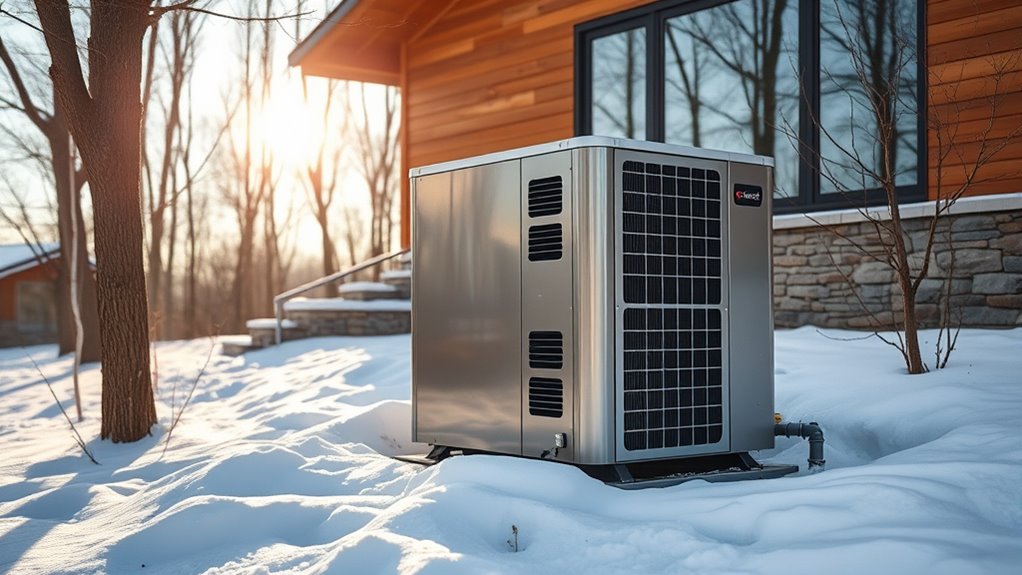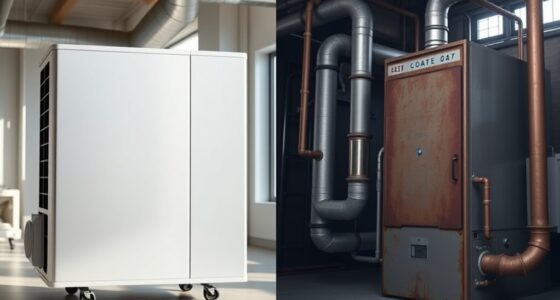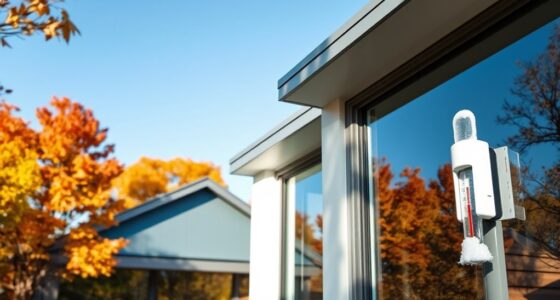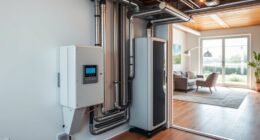Proper sizing of your heat pump plays a vital role in controlling energy consumption. An appropriately sized unit heats and cools your home efficiently, preventing issues like short cycling or insufficient comfort. Oversized or undersized systems waste energy and increase operational costs. Ensuring your heat pump is correctly sized with professional assessments helps you save money and enjoy consistent comfort. To discover how precise sizing can maximize your system’s performance, keep exploring these key points.
Key Takeaways
- Proper sizing ensures the heat pump operates efficiently, reducing unnecessary energy consumption caused by cycling or overworking.
- Correctly sized units minimize short cycling, leading to more stable operation and lower energy use over time.
- Oversized heat pumps waste energy through frequent on/off cycles, decreasing seasonal efficiency and increasing operating costs.
- Undersized units strain to meet demands, causing increased energy use from auxiliary heating and system overload.
- Accurate load calculations optimize system performance, enhancing energy savings and prolonging equipment lifespan.
Why Correct Sizing Matters for Energy Efficiency
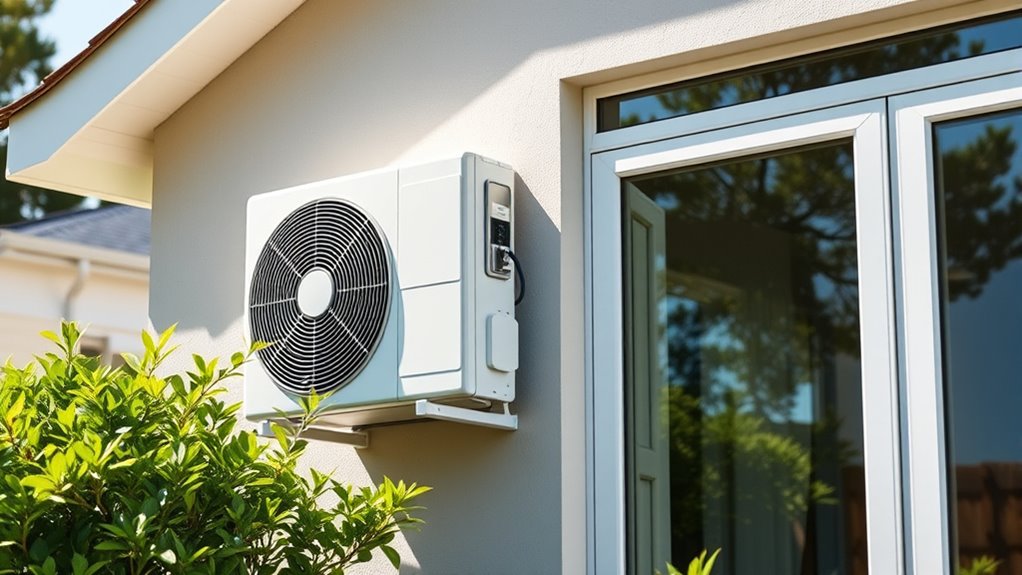
Proper sizing is essential because it directly impacts your heat pump’s efficiency and energy consumption. When your HVAC system is correctly sized through accurate load calculations, like Manual J, it operates ideally without excessive cycling or continuous running. An oversized heat pump can waste energy by short cycling, reducing seasonal efficiency and increasing utility bills. Conversely, a properly sized unit ensures your system meets your home’s heating and cooling needs without overworking. This balance minimizes wear on components, maintains peak system performance, and guarantees better energy efficiency over time. Proper sizing also helps your heat pump achieve higher SEER and HSPF ratings, meaning lower energy consumption and cost savings. Additionally, correct sizing can prevent issues related to improper system performance, ensuring reliable operation and longevity. Overall, correct sizing is key to maximizing your heat pump’s performance and reducing long-term energy expenses.
Risks of Undersized and Oversized Heat Pumps
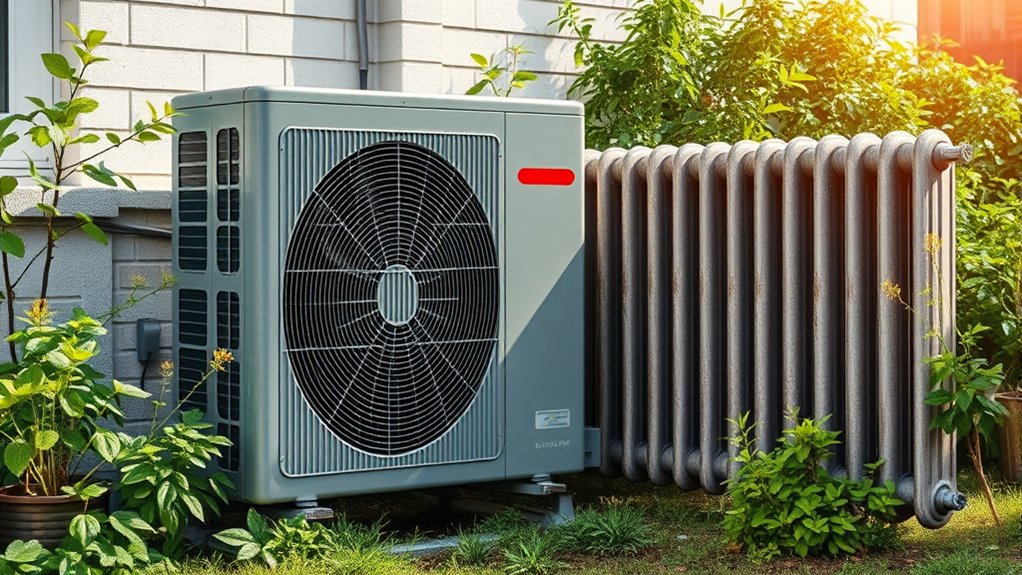
Have you ever wondered what happens if your heat pump is too small or too large for your home? An undersized heat pump struggles to meet heating and cooling loads, especially in extreme climate conditions, leading to higher energy use from supplementary heating and discomfort. Conversely, an oversized heat pump cycles frequently, causing inefficiency, increased wear, and higher operational costs. Both improperly sized systems reduce overall energy efficiency, shorten system lifespan, and increase maintenance needs. An oversized unit can also dehumidify excessively, resulting in poor humidity control and potential mold growth in humid climates. Proper sizing guarantees your system operates smoothly, maintains comfort, and minimizes stress on components—saving you money and extending your heat pump’s longevity. Additionally, understanding system sizing is crucial for optimal performance and energy savings.
How to Accurately Determine the Right Size for Your Home
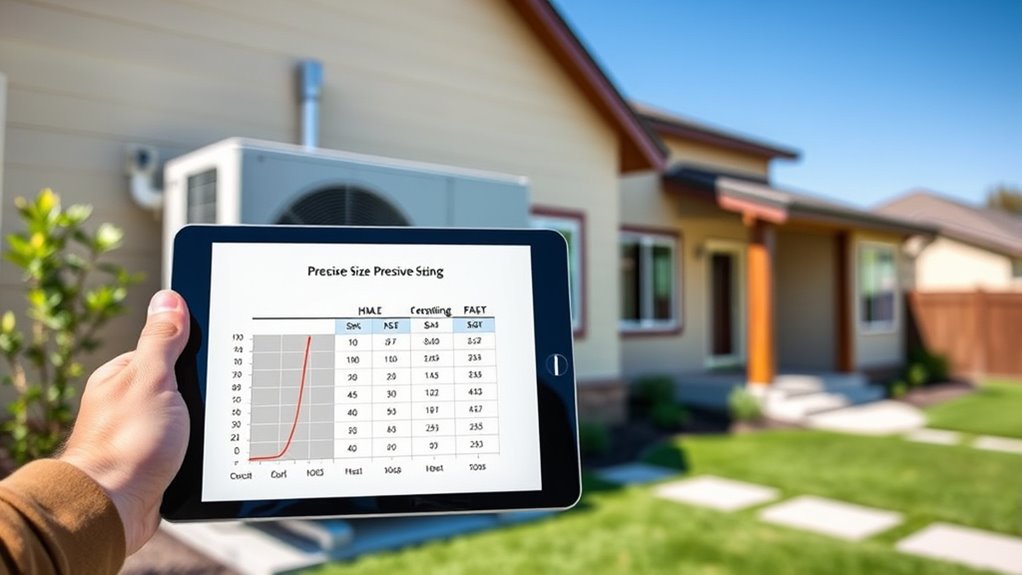
Wondering how to guarantee your heat pump is the right size for your home? Accurate heat pump sizing begins with a thorough load calculation, typically performed using Manual J. This assessment considers insulation, window size, climate, and seasonal variations to match your home heating needs precisely. Avoid rule-of-thumb estimates like 30 BTUs per square foot, as they often result in improper sizing and decreased efficiency. Hiring an HVAC technician ensures proper load calculation and system performance. Using load calculation ensures your system is tailored to your home’s specific requirements. Use the following factors to guide your decision:
| Factor | Impact |
|---|---|
| Load Calculation | Determines precise capacity needed |
| Climate Considerations | Affects seasonal sizing needs |
| Home Characteristics | Insulation, windows, layout |
| System Efficiency | Guarantees ideal operation |
| Properly Sized System | Maximizes comfort and energy savings |
This approach guarantees your heat pump is properly sized for long-term efficiency and comfort. Additionally, understanding system efficiency can help you select a model that offers optimal energy savings over its lifespan.
The Impact of Proper Sizing on Operating Costs and Comfort
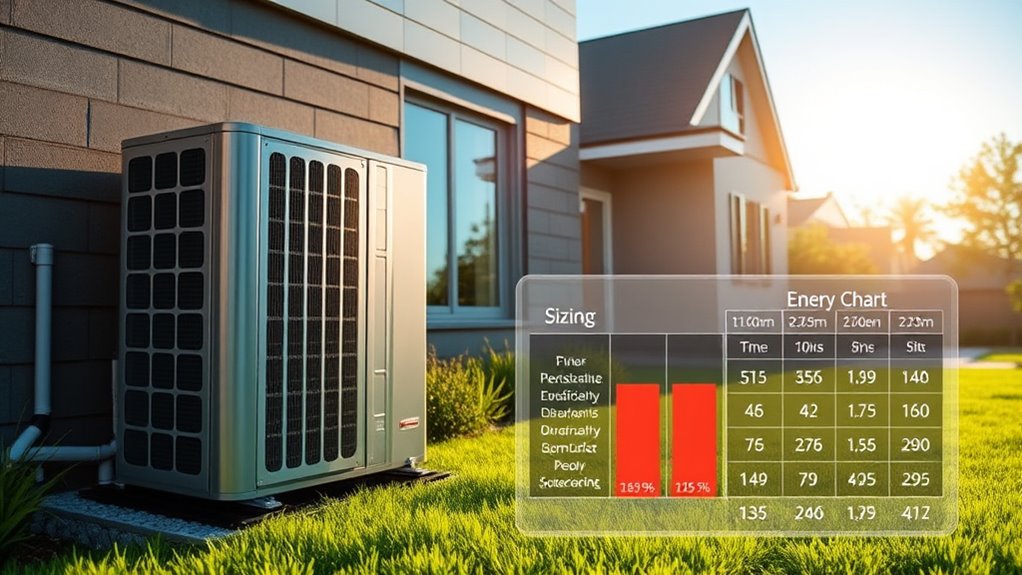
Choosing the right size for your heat pump directly impacts your home’s comfort and your energy bills. Proper sizing guarantees your system operates efficiently, reducing energy consumption and lowering operating costs. An over- or undersized unit can cause frequent cycling, which wastes energy and strains system components. Oversized heat pumps often short cycle, increasing energy bills and reducing efficiency, while undersized units struggle to maintain thermal comfort during extreme weather, leading to higher energy use. Accurate sizing minimizes the need for auxiliary heating or cooling, further boosting energy savings. Additionally, properly matched systems maintain ideal system performance, extend equipment lifespan, and prevent costly repairs. Overall, proper sizing is essential for achieving consistent comfort and maximizing energy efficiency, saving you money in the long run.
Tips for Ensuring Peak Performance Through Professional Sizing and Maintenance
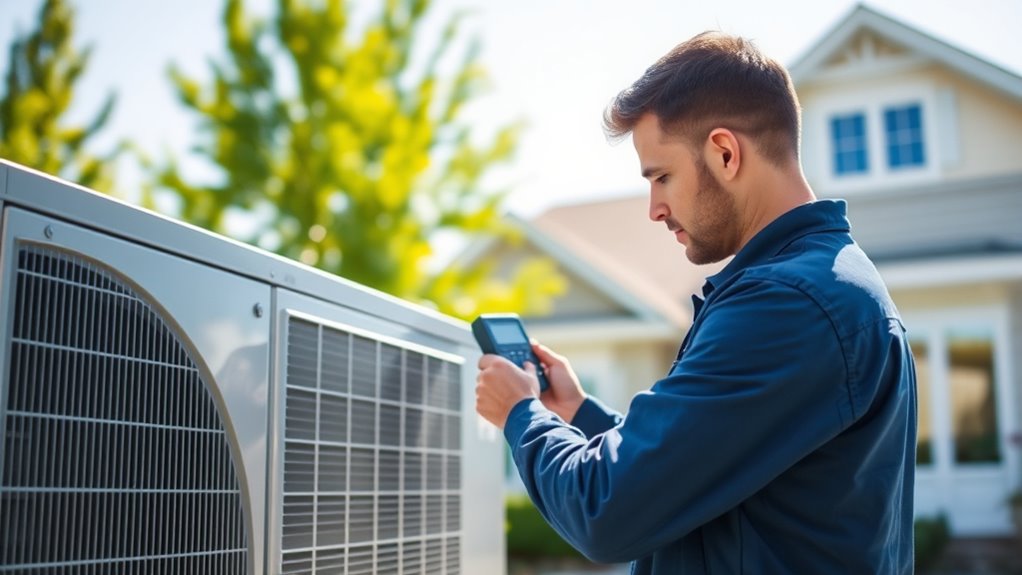
Ensuring your heat pump operates at peak performance starts with professional sizing and proper installation. Accurate load calculations, like Manual J and blower door tests, help determine your home’s exact heating and cooling needs, ensuring ideal performance. Proper installation by experienced technicians improves system efficiency, reduces short cycling, and prevents unnecessary wear. Regular maintenance, including filter changes and duct sealing, keeps your HVAC systems running smoothly and maintains maximum efficiency over time. Scheduling professional evaluations helps identify issues early, extending your system’s lifespan and preventing efficiency loss. When your heat pump is correctly sized and well-maintained, it operates more reliably, consumes less energy, and provides consistent comfort, saving you money and reducing your environmental impact.
Frequently Asked Questions
Is It Better to Oversize or Undersize a Heat Pump?
You might wonder if oversizing or undersizing a heat pump is better. In reality, neither is ideal. Oversizing causes short cycling, increasing wear and energy bills, while undersizing struggles to keep your home comfortable, especially during cold weather. The best approach is to get a professional load calculation like Manual J, ensuring your heat pump matches your home’s needs, maximizing efficiency, comfort, and longevity.
What Is the Rule of Thumb for Heat Pump Sizing?
The rule of thumb for heat pump sizing is roughly 30 BTUs per square foot of your living space. You might think this gives a quick estimate, but it often leads to oversizing—by about 31,000 BTUs on average—or too much capacity. Remember, this method doesn’t consider your home’s unique features like insulation or climate, which are essential for accurate sizing and ideal efficiency.
How Do You Calculate the Energy Consumption of a Heat Pump?
Calculating a heat pump’s energy consumption starts with understanding its power draw. You find this by multiplying the voltage by the current, then converting watts to kilowatts. Next, estimate how many hours it operates annually. Multiply the average kilowatt usage by those hours, and you’ll discover the annual energy consumption. Keep in mind, actual bills or energy monitors give the most precise picture of real-world energy use.
How Many Kwh Does a 10KW Heat Pump Use?
A 10 kW heat pump typically uses between 2,500 and 4,000 kWh per year, depending on your climate and how much you use it. During operation, it draws about 2 to 6 kW of power, with peak usage around 6 kW when running at full capacity. Your actual consumption varies with outdoor temperatures, insulation, and whether auxiliary heating is involved. Proper sizing and maintenance help reduce energy use.
Conclusion
Getting your heat pump size just right isn’t just about saving energy; it’s about ensuring comfort and efficiency blend seamlessly. When you choose the right size, you might find that your energy bills drop just as unexpectedly as the first cold snap catches you off guard. It’s a reminder that precision in sizing can unexpectedly align your home’s comfort with your savings, turning a simple decision into a subtle, yet powerful, harmony of function and cost.
